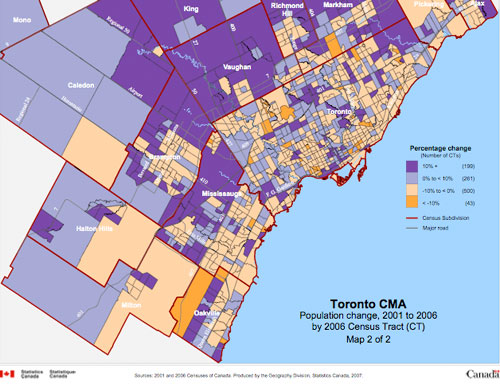Dan416
Senior Member
Eastern Mississauga has actually depopulated within the last decade with the area east of Cooksville (bounded by Bloor-Cawthra-Dundas-Mississauga Valley); Malton; and the area around Lakeshore-Ogden suffering the greatest population loss. Meanwhile Steetsville, Churchill Meadows, Meadowvale, Mavis-MacLaughlin area north of the 403, MCC, Lorne Park and Port Credit have all grown.

Bloor may have apartment buildings, honestly which corridor doesn't, but that does not guarantee high walk-in yield. Dundas would have higher numbers because it'd be more easily accessible for routes from western and southern Sauga. Dundas also has actual trip-generator in the form of its popular, well-publicized, high in demand commercial retail strip from Cawthra to Universal. Bloor is more limited in its catchment, really only from Eastgate southwards. Dundas riders would still continue to head towards Kipling (or Honeydale/East Mall).
Growth from very little will always register as a large percentage increase.
When I talk of density, I mean of the built-form. Western Mississauga (west of the Hurontario) is sparsely populated, consisting mostly of single family homes, townhomes, and the occasional apartment building in Meadowvale.
Okay I'm exaggerating a little bit, but I know where I live there are virtually no apartment buildings. The areas that were zoned by high density (apartments) were down-zoned to medium density (townhomes) and the medium density areas were down-zoned to low density (single family homes) and this was relatively recently, i.e. the last 15 years or so. And currently, the last strips of land in west west Mississauga are being filled with....single family homes, although they are built much closer together now, it's hardly high density.






